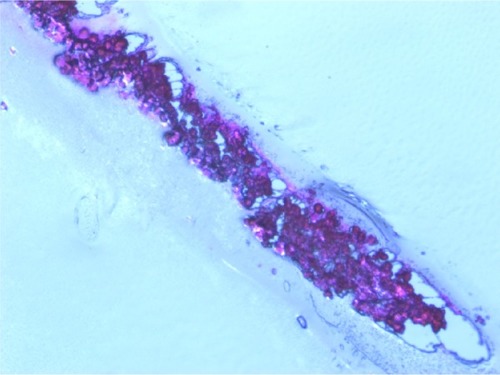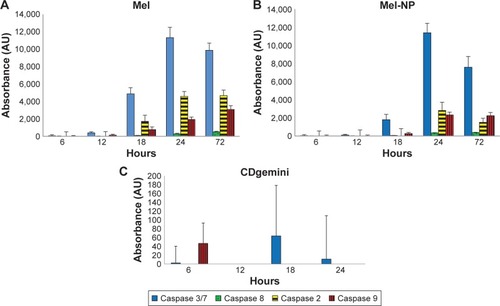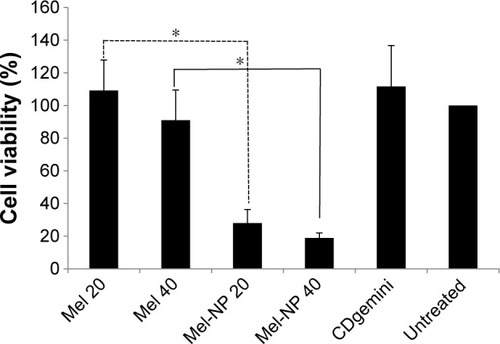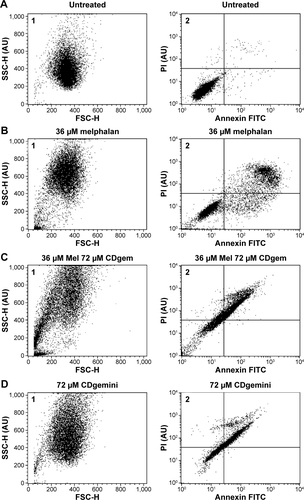Figures & data
Table 1 Particle size determined by dynamic light scattering
Table 2 Cellular toxicity of melphalan and formulations in both monolayer and spheroid cultures
Figure 1 Photomicrographs of the cross-section of tumor spheroids showing a three-dimensional stratification. 200× Magnification.

Table 3 A375 cells were treated with melphalan and melphalan nanoparticles at 36 µM drug concentration and cell death determined by flow cytometry
Figure 2 Caspases 3/7, 8, 2 and 9 expression for Mel (A), Mel-NP (B) and CDgemini (C) treated cells.
Notes: Results are presented for triplicate samples. Error bars are standard deviation.
Abbreviations: Au, arbitrary unit; Mel-NP, drug/CDgemini nanoparticles; CDgemini, β-cyclodextrin-modified gemini; Mel, melphalan.

Table 4 Cell cycle analysis in A375 cells
Figure 3 Evaluation of the efficiency of the Mel 20 and 40 µM and Mel-NP 20 and 40 µM concentrations on Mel-resistant melanoma cells.
Notes: Bars represent standard deviation. *Statistical difference at P<0.05.
Abbreviations: Mel-NP, drug/CDgemini nanoparticles; CDgemini, β-cyclodextrin-modified gemini; Mel, melphalan.

Figure S1 Flow cytometry plots.
Notes: (A) Untreated cells (1) forward vs side-scattering and (2) early apoptotic marker Annexin V vs late apoptotic/necrotic marker propidium iodide. (B) Cells treated with melphalan in acidified ethanol (1) forward vs side-scattering and (2) early apoptotic marker Annexin V vs late apoptotic/necrotic marker propidium iodide. (C) Cells treated with melphalan/CDgemini nanoparticles (1) forward vs side-scattering and (2) early apoptotic marker Annexin V vs late apoptotic/necrotic marker propidium iodide. (D) Cells treated with the CDgemini surfactant delivery agent alone (1) forward vs side-scattering and (2) early apoptotic marker Annexin V vs late apoptotic/necrotic marker propidium iodide. While the MTT assay and forward/side scattering plot (D1) of the cells treated with the CDgemini surfactant delivery system alone indicates no cellular death, similarly to untreated cells (A1), the plot for the apoptotic marker of the delivery agent (D2) shows a significant shift of the whole healthy population. This shift makes interpreting the cell death attributed to the Mel-CDgemini nanoparticles (C2) impossible.
Abbreviations: Au, arbitrary unit; Mel-NP, Melphalan/CDgemini nanoparticles.

